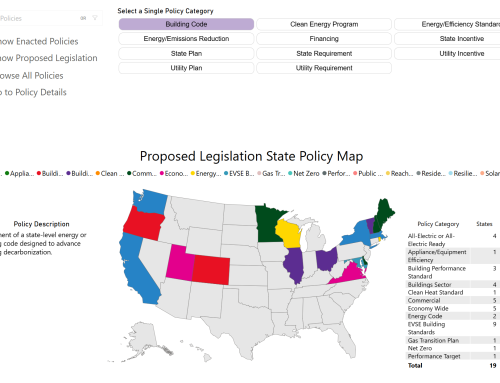
According to Buildings Hub’s Federal Policy and Funding dashboard, Tribal governments are eligible for more than $16.5 billion from the Inflation Reduction Act (IRA), $5.5 billion from the Infrastructure Investment and Jobs Act (IIJA), and about $3.7 billion in annual appropriations. Much of this almost $26 billion is inaccessible, however, due to the federal funding freeze initiated by President Donald Trump on his first day in office and a January 27 memo from the Office of Management and Budget to government agencies. Although the pause was blocked by a federal judge on January 28 and the memo was rescinded on January 29, uncertainty still shrouds the status of access to federal funds for multiple entities, including Tribal Nations.
At the onset of the freeze, the Executive Director of the Native American Rights Fund published a statement reflecting his community’s shock. John Echohawk spoke on the “government-to-government obligation” the United States has with Tribal Nations, emphasizing the particularly acute harms of blanket federal freezes on Indigenous communities. Other Tribal leaders also underscored their statuses as sovereign nations and the threat that a pause on federal funding puts their communities under. Native News Online published last week a detailed list of the more than 200 federal programs that Tribal Nations are currently unable to access funding to, including an array of IIJA and IRA programs.
Included on that list is the Tribal Electrification Program (TEP), which is comprised of $150 million from the IRA to expand Tribal households’ access to zero emission electricity and residential electrification measures. This funding was almost entirely awarded in 2024 via two rounds of awards, one of $72 million in March and another of $71 million in September. Just because funding has been designated as awarded does not mean those dollars are in the hands of awardees, however. Federal resources like sam.gov and USASpending.gov display that while this funding has been obligated — as in a legal agreement exists between the federal government and the awardee — much of the funding has not yet been outlaid — or actually deposited in awardees’ bank accounts.
The Climate Program Portal, which aggregates public announcements from agencies, counts 34 total projects as having been awarded a total of $143.2 million in funding through TEP. Yet USASpending.gov only lists 16 projects as having been obligated $86.54 million under the program’s assistance listing number (15.165), seven of which have not been outlaid any funding. Five awardees have received the full sum of their awards, amounting to $11.2 million; the other outlaid funding adds up to about $500,000, meaning no data is available for the remaining awarded sum of $56 million.
The status of the Greenhouse Gas Reduction Fund’s (GGRF) programs is less clear. The three IRA-funded sub-programs include the $14 billion National Clean Investment Fund (NCIF), the $7 billion Solar for All program, and the $6 billion Clean Communities Investment Accelerator (CCIA). All of this funding has been obligated according to the Climate Program Portal. $504 million has been awarded directly to Tribal governments through Solar for All, an important lever for electrification in rural Indigenous communities. Further, between the NCIF and CCIA, almost $1.5 billion is earmarked for Tribal communities, and another $700 million has been committed by one NCIF awardee also for Tribal Nations. Finally, the Native CDFI Network was awarded $500 million through CCIA to support its network of 63 Tribal community lenders, with eligible projects including distributed energy generation and net-zero buildings.
USASpending.gov, however, reports that no awards have been made to Tribal governments through NCIF and CCIA (assistance listings 66.957 and 66.960). Only about half of the awarded Solar for All (assistance listing 66.959) funding for Tribes is visible on the site, amounting to $223.15 million in obligations but only $105,000 in outlays. To complicate matters further, EPA Administrator Lee Zeldin announced efforts to claw back GGRF funding, decrying the programs’ overarching models of financial agreements and sub-granting. This action represents a legal challenge, since outlaid funding represents a contractual agreement.
A similar conspicuous lack of data applies to the Home Electrification and Appliance Rebates program funding for Tribal Nations. The Department of Energy allocated $225 million to Tribal Nations in November 2023 which, according to the latest publication of federal awards released in January 2025, is funding 775 projects. USASpending.gov (assistance listing 81.041) notes only 77 programs making up $58.4 million, of which none has been outlaid.
All in all, the federal review of programs is still underway, meaning that Tribal and other allocated or awarded funding is still in limbo. An incredible amount of uncertainty persists. Most of all, Tribal Nations need clarity on when or if these millions in funding meant to aid in equitable access to clean electrification and affordable energy will be disseminated.



